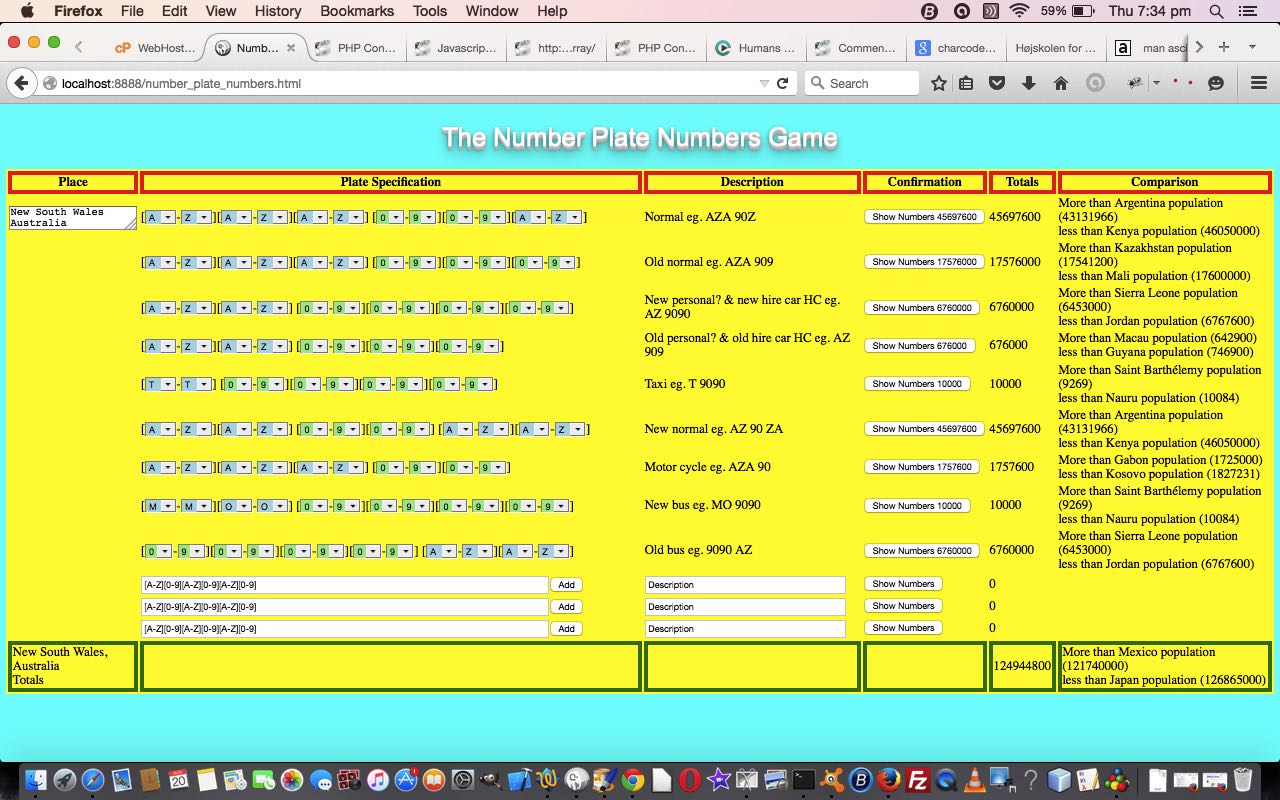Sometimes in mathematics it’s hard to tie concepts down to real world experience. Personally, I’ve often wondered about the use of factorials. Then we read here that there are n! different ways of arranging n objects in sequence.
Then, yesterday, started to wonder about our incredibly fractured number plate system here in New South Wales, a state of Australia.
Are you in a family that guesses number plate origins on car trips? Probably a good game on Route 66?! If yes, try giving an instantaneous answer here in New South Wales just being given the number plate numbers and letters!
Then wondered how many vehicles are “covered” by the range of possibilities of a “number plate system”, and in doing the “math” thought that my lifelong quest for “factorial” relevance had come to an end … you can’t imagine my joy … a bit like in William Steig’s “Sylvester and the Magic Pebble” (won’t wreck it for you here, in case you want to purchase it via the Amazon link) … but realised a bit later it wasn’t factorials, nor did it involve probabilities as such, but it was just plain old simple “multiplication” … oh well … it was still worth the thoughts.
So the gist of the Number Plate Numbers Game mathematics is to multiply “range numbers”. So if a number plate number can be a letter from A to Z then its contribution to the total of possibilities is 26. You guessed it … a number (from 0 to 9) contributes “10 times” to the existing number of possibilities. So a number plate like AZA 909 is in amongst 26x26x26x10x10x10 (= 17576000) number plates within that “number plate system”. The other funny thing about all this is that all you have to do is rearrange the sequence of the arrangement, and a whole (perhaps 17576000) lot more “number plate” possibilities open up.
Today we want to avoid the server side PHP we often use here at this blog, to mix it up a bit for users with no web hosting that suits, so today we write our game just with HTML and Javascript. For help with the population comparisons we apply in the game we would like to thank Wikipedia for this link’s information.
So why not try the game or peruse the HTML and Javascript source code you could call number_plate_numbers.html (Stop Press: yesterday’s work was a bit cross-browser “not so good” and you can see how it changed here).
If this was interesting you may be interested in this too.



